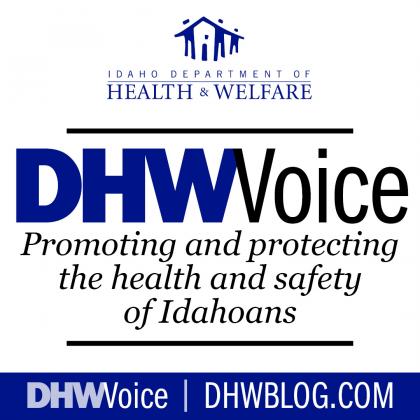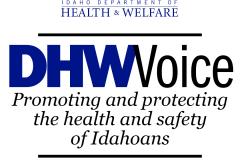COVID Q&A: Updated recommendations for travel and masks to lower your risk
It is no longer a federal mandate to wear a mask on public transportation and in transportation hubs, but the Centers for Disease Control and Prevention (CDC) has issued updated COVID-19 guidance about masks and travel to help people assess their risk for infection so they can take steps to stay healthy.
As the number of COVID-19 cases varies in different parts of Idaho and the nation, it’s a good idea to keep a quality mask handy when you travel, in case you find yourself in a crowded or poorly ventilated area where the risk of getting infected with COVID-19 is higher.
When should I wear a mask in travel and public transportation settings?
Wearing a well-fitting and high-quality mask or respirator is recommended for everyone aged 2 years or older when indoors on public transportation and at transportation hubs. It is especially important to wear a mask:
- When public transportation or transportation hubs are crowded
- In areas that are poorly ventilated, including:
- Small, enclosed spaces, such as airport jet bridges
- Public transportation when the ventilation system is off and windows are closed, such as when the engine is turned off on a plane
- During international travel and in transportation hubs with international travelers
- During long-distance domestic travel
- When the COVID-19 Community Level in your area in the United States is high
- If you are at high risk for getting very sick from COVID-19, or if you live with or have social contact with someone at high risk
- If you came into close contact with someone with COVID-19 and are not recommended to quarantine because you are up to date on your COVID-19 vaccines or have recently recovered from COVID-19. Wear a well-fitting mask or respirator around others, including when traveling or using public transportation, until 10 days from the date of your last close contact.
- Do not travel if you are recommended to quarantine.
- If you have COVID-19, do not travel until a full 10 days after your symptoms started or the date your positive test was taken if you had no symptoms.
Why are masks still recommended in travel and public transportation but not in other community settings?
- Using public transportation can involve spending long periods of time in areas that may be crowded or poorly ventilated, increasing the chance for exposure to COVID-19.
- People on public transportation may not have the option to avoid being around people who are not wearing masks by getting off a bus or flight or relocating to another area.
- People from countries or US communities with different levels of COVID-19 mix when they travel. Travelers depart to many different locations from a hub, so an exposure could lead to spread across the United States and around the world.
What are other ways I can reduce risk of COVID-19 infection in travel and transportation settings?
- Consider traveling during off-peak times when fewer people travel.
- Open windows to improve ventilation if this is an option.
- Visit Domestic Travel During COVID-19 | CDC and International Travel | CDC for additional ways you can protect yourself and others during travel.
- Before travel, regardless of the destination and your vaccination status, consider getting tested for infection with a viral test as close to the time of departure as possible (no more than 3 days).
- After domestic travel, regardless of your vaccination status, get tested if your travel involved being in crowded places while not wearing a well-fitting mask or respirator and follow additional guidance if you know you were exposed to a person with COVID-19. Self-monitor for COVID-19 symptoms. If you have symptoms, isolate and get tested.
How do state and local regulations apply to recommendations for masking during travel?
People should continue to follow any rules and recommendations of state, tribal, local, and territorial authorities. The CDC continues to recommend that people remain aware of the disease level in their local areas and act accordingly.
Dr. Christine Hahn is Idaho’s state epidemiologist and the Division of Public Health’s medical director. She is board certified in infectious disease and works in an Idaho tuberculosis clinic twice monthly. She also serves on the Centers for Disease Control and Prevention’s Advisory Committee on Immunization Practices, and since late February 2020, has been focusing almost solely on responding to the coronavirus pandemic.
COVID-19 resources:
- Photos and more tips about N95 Respirators, Surgical Masks, Face Masks, and Barrier Face Coverings
- Idaho’s Coronavirus website
- CDC COVID-19 website
Follow the Department of Health and Welfare on Twitter, Facebook, and Instagram for updates and information you can trust.
The Idaho Department of Health and Welfare is dedicated to strengthening the health, safety, and independence of Idahoans. Learn more at healthandwelfare.idaho.gov.



Join the Discussion
Please note the following terms of participation in commenting on the DHW Voice blog.
To ensure a productive discussion you agree to post only comments directly related to this post and to refrain from posting obscenities; threatening, abusive or discriminatory language; sexually explicit material; and other material that would violate the law if published here; promotional content; or private information such as phone numbers or addresses. DHW reserves the right to screen and remove inappropriate comments.